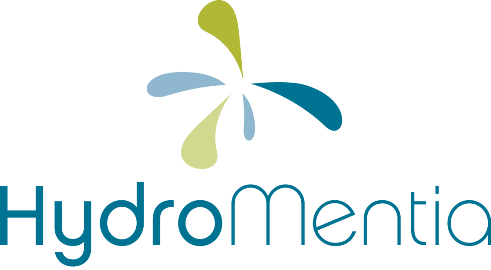Algae Scrubbers Get Chance to Shine on Taylor Creek
February 2, 2007Thursday’s environmental celebration had it all:
A 3.6-acre pool filled with manure-laden runoff. Huge sheets of mesh-covered plastic designed to house pollution-munching algae. A throng of state environmental and farming leaders, pledging that this time they will rescue Lake Okeechobee from its smothering shroud of waste.
And of course, Paul Newman, who came to an Okeechobee County cattle ranch Thursday to watch an ambitious cleanup technology make its long-awaited premiere.
Yes, that Paul Newman.
The Oscar-winning actor is a longtime investor in HydroMentia, an Ocala company that says it has a cheaper, more effective way to purge phosphorus and nitrogen from runoff. But his famous blue eyes weren’t exactly twinkling at the agonizing pace of efforts to stem the lake’s soaring pollution levels.
“It’s so slow and painful,” he said at the opening of the company’s cleanup project along Taylor Creek north of the lake. “Ever y year the situation gets worse. It gets more expensive. And you’d think people would just jump on this.”
Newman was with his daughter Nell, who said the two of them last fished on the lake more than a decade ago. “I understand you don’t catch bass like you used to,” the father said.
The Newmans aren’t alone in their hopes for HydroMentia, which estimates that one acre of its algae-based “scrubbers” might accomplish as much phosphorus removal as 100 acres of South Florida water managers’ sprawling filter marshes. Walter Adey, the Smithsonian Institution ecologist who invented the technology, says the scrubbers also remove carbon dioxide, a gas that contributes to global warming.
With soaring land prices making traditional marshes increasingly costly, the company’s relatively pint-sized projects could become a key ingredient in cleanups north and south of the lake — if the scrubbers work as advertised.
On the other hand, the scrubbers also require intensive maintenance: As often as once a week, workers “harvest” the algae, which the company can recycle into compost, livestock feed or possibly even fuel. The harvesting removes the pollution while spurring the algae to keep growing, much like a freshly mowed lawn.
“It isn’t ‘set it and forget it,’ “ company President Margaret Palmer said. “You have to manage it, but the benefit of managing it is you can accomplish a lot more nutrient removal in a lot smaller space.”
Environmentalists said they’re eager to see what the scrubbers can do.
“This is a technology that has a lot of promise,” said Paul Gray, a biologist for Audubon of Florida, which recently called for a massive expansion of the state’s efforts to clean runoff entering the lake. But he cautioned, “It’s still kind of experimental.”
Wayne Nelson, executive director of Fishermen Against Destruction of the Environment, said he’s already a believer.
“It’s unfortunate that it wasn’t done 12 or 13 years ago,” Nelson said. “We might even at this late date be able to save the lake with projects like this.”
The South Florida Water Management District is watching as well.
“Because of the cost of land, we’re looking at many different technologies, and this is just one that intuitively made sense,” said Chip Merriam, a deputy executive director.
In 2005, the district awarded HydroMentia a $1.8 million, two-year contract to demonstrate its technology along Taylor Creek, one of two. The South Bay Glade the lake’s foulest tributaries. The money, from a grant by the state Department of Agriculture, went toward the 3.6-acre demonstration project that marked its completion Thursday.
An earlier pilot project found that the company’s scrubbers could remove 820 pounds of phosphorus each year for ever y acre of treatment area, Palmer said. In contrast, the district says 33,000 acres of its filter marshes south of the lake removed less than 12 pounds per acre last year.
Palmer says the company’s new plant will aim to remove more than 1,100 pounds of phosphorus per acre each year. It can take in 15 million gallons of runoff per day– a lot, but just a fraction of the 2 billion gallons that flow each day into the lake.
Similar technology is already used in aquariums, and Indian River County is interested in employing the techniques for runoff near the coast, the company says. Adey, a member of HydroMentia’s board, said the scrubbers are designed to move runoff in pulses that mimic the washing of waves across coral reefs where algae thrive. He has suggested as far back as 1992 that such methods could become the key to cleaning the Everglades — a controversial proposal at the time because some of the financing for his research came from the sugar industry.
Other HydroMentia board members include Palmer’s father, Whit, a development and mining executive who has worked with Newman in creating a camp for chronically ill children north of Orlando.
“He’s the HydroMentia part,” joked Newman, who turned 82 last week. “And I’m the dementia part.”
Merriam said the district still considers its traditional filter marshes the best way to treat huge surges of runoff north and south of the lake. But if HydroMentia’s scrubbers can work on a large scale, he said, the district will look for ways to use them.
Newman said it should be “a no-brainer.”
“I know enough to know that this is really an extraordinary possibility,” he said. “And to not take accelerated advantage of it is almost criminal.”


Comments are closed here.